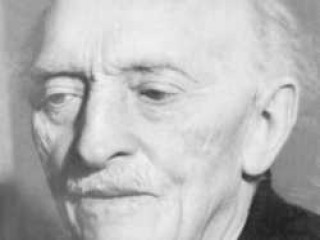
Emil Nolde biography
Date of birth : 1867-08-07
Date of death : 1956-04-13
Birthplace : Schleswig, Germany
Nationality : German
Category : Famous Figures
Last modified : 2011-04-10
Credited as : Expressionist painter, Masterpieces ,
Emil Nolde was one of the major German expressionist painters. His religious scenes, landscapes, and still lifes are distinguished by an intense coloristic richness and primitivistic angularity.
Emil Nolde, born Emil Hansen on a farm in northern Schleswig near the town of Nolde on Aug. 7, 1867, was almost totally self-taught as a painter. Until 1892 he was a wood-carver in furniture factories. He taught drawing at a museum school in St. Gall, Switzerland (1892-1898), and designed postcards with personified images of the Swiss Alps. The money earned permitted him to study painting full time in Munich. In Paris in 1899, he was impressed by Titian, Rembrandt, and Ãdouard Manet, but he was disappointed by the formal training he received and a year later moved to Copenhagen. His deep despondency and anguished loneliness were only partially relieved by his marriage in 1902, when the artist also changed his name to Nolde.
Up to this time Nolde's paintings had been eclectic symbolic works dependent on his Munich teachers and on Arnold Backlin. In 1904 he adopted an impressionist manner, but the experience of Vincent Van Gogh and Edvard Munch turned him away from these soft nuances to bright pigments vehemently and freely brushed onto the canvas. Since 1898 Nolde had also been executing etchings, usually grotesques and fantasies.
In 1905 Nolde exhibited in the Berlin Secession. While he was a member of Die Brucke (The Bridge) in Dresden (1906-1907), his colors increased in brilliance and abandoned application, and he also learned woodcut and lithography techniques.
The fantastic imagery of his prints appeared in Nolde's paintings from 1909 to 1912. He expressed his mystical religious views in biblical scenes and lives of saints; the figures are heavy and primitive and have masklike faces. Masterpieces of this period are the Last Supper and Pentecost (both 1909) and the celebrated triptych Life of St. Mary Aegyptiaca (1912). Although Nolde made several attempts to donate his religious paintings, none of them was ever permanently installed in a church. Scenes from city life, seascapes, and still lifes complemented these symbolic works with subjective views of contemporary life.
When the Berlin Secession rejected his paintings in 1910, Nolde founded the New Secession and became a rallying point for the German avant-garde. He joined an expedition to New Guinea (1913-1914) to study the life and art of the aborigines, an experience which served as the source for Oriental and primitive motifs in his paintings, as in South Sea Islander (1914).
Renown and success came to Nolde in the 1920s, and in 1931 he was appointed to the Prussian Academy of Art. But in 1937 his art was declared "degenerate" by the Nazis, and his works were removed from German museums; in 1941 he was forbidden to paint. The small watercolors called "Unpainted Pictures," made secretly during this time, became known after World War II, when Nolde's significance was recognized in a number of retrospective exhibitions. He died in Seebüll on April 13, 1956.
















